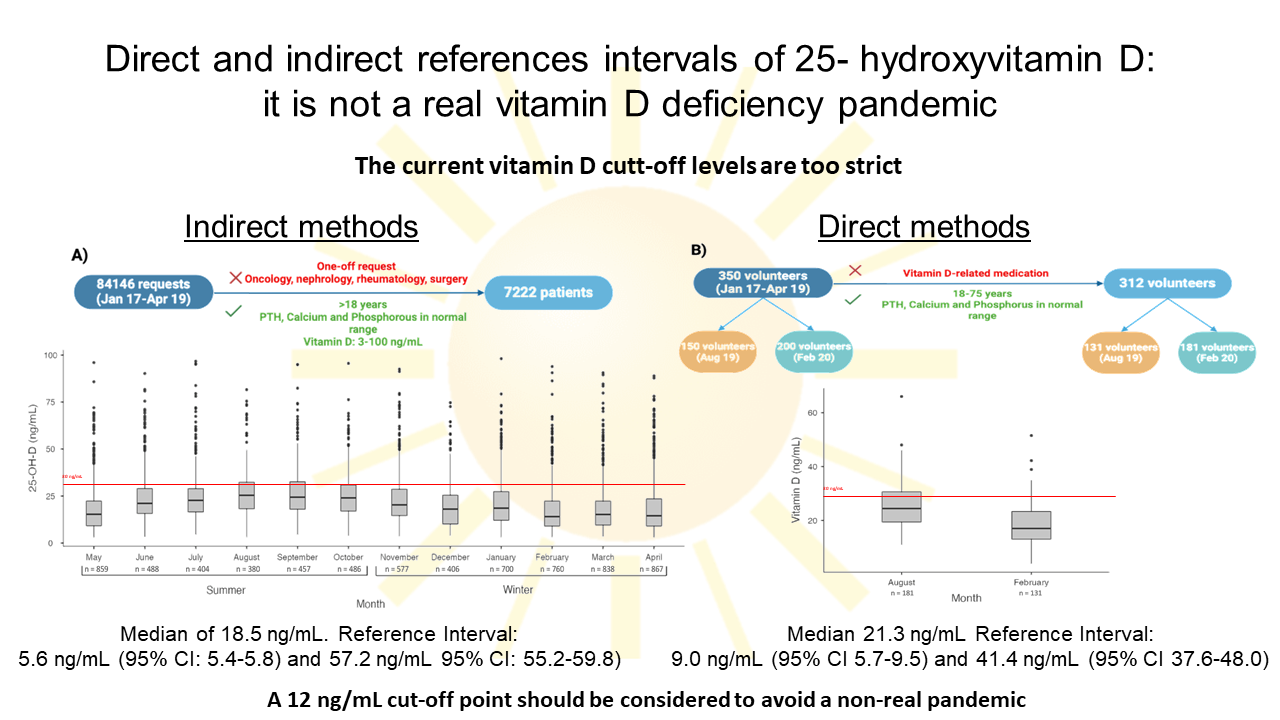Journal Information
Journal ID (publisher-id): BM
Journal ID (nlm-ta): Biochem Med (Zagreb)
Title: Biochemia Medica
Abbreviated Title: Biochem. Med. (Zagreb)
ISSN (print): 1330-0962
ISSN (electronic): 1846-7482
Publisher: Croatian Society of Medical Biochemistry and Laboratory Medicine
Article Information
Copyright statement: Copyright Croatian Society of Medical Biochemistry and Laboratory Medicine
Copyright: 2024, Copyright Croatian Society of Medical Biochemistry and Laboratory Medicine
License (https://creativecommons.org/licenses/by/4.0/):
This is an open-access article distributed under the terms of the Creative Commons Attribution (CC BY) 4.0 License, which permits unrestricted use, distribution, and reproduction in any medium, provided the original work is properly cited.
Date received: 29 December 2023
Date accepted: 08 March 2024
Publication date: 15 June 2024
Publication date: 15 June 2024
Volume: 34
Issue: 2
Electronic Location Identifier: 020706
Publisher ID: bm-34-2-020706
DOI: 10.11613/BM.2024.020706
Direct and indirect reference intervals of 25-hydroxyvitamin D: it is not a real vitamin D deficiency pandemic
Diego Aparicio-Pelaz[1]
Sheila López-Triguero[1]
Elena Llorente[1]
Juan José Puente-Lanzarote[1]
Author notes:
[*] Corresponding author: Juanjo.peafan21@gmail.com
Author contributions
Conceptualization, data duration, supervision, writing – review & editing: E Llorente, JJ Puente-Lanzarote. Investigation, methodology, project administration, software, visualization, writing original draft: M Fabre, D Aparicio-Pelaz, JJ Perales-Afán. Formal analysis, investigation: M Fabre, S López-Triguero, D Aparicio-Pelaz, JJ Perales-Afán.
• Addressing vitamin D deficiency, we established reference intervals using direct and indirect methods
• Winter reference intervals (5.4-55.7 ng/mL) contrasts with higher summer values (5.9-59.9 ng/mL), emphasizing the impact of seasons
• Differences between vitamin D reference intervals obtained by direct and indirect methods were detected
• The importance of regional factors is critical; notable distinctions in vitamin D values underscore the need for revised guidelines
Introduction
Many studies report vitamin D (25-OH-D) deficiency, although there is no consensus among scientific societies on cut-offs and reference intervals (RI). The aim of this study is to establish and compare RI for serum 25-OH-D by direct and indirect methods.
Materials and methods
Two studies were performed in Zaragoza (Spain). A retrospective study (N = 7222) between January 2017 and April 2019 was used for RI calculation by indirect method and a prospective study (N = 312) with healthy volunteers recruited in August 2019 and February 2020 for direct method. Seasonal differences were investigated. Measurements were performed on Cobas C8000 (Roche-Diagnostics, Basel, Switzerland) using electrochemiluminescence immunoassay technology.
Results
Reference intervals (2.5-97.5 percentile and corresponding 95% confidence intervals, CIs) were as follows: by indirect method 5.6 ng/mL (5.4 to 5.8) - 57.2 ng/mL (55.2 to 59.8), in winter 5.4 ng/mL (5.2 to 5.7) - 55.7 ng/mL (53.6 to 58.4), while in summer 5.9 ng/mL (5.4 to 6.2) - 59.9 ng/mL (56.3 to 62.9). By direct method 9.0 ng/mL (5.7 to 9.5) - 41.4 ng/mL (37.6 to 48.0), in winter 7.4 ng/mL (3.9 to 8.6) - 34.6 ng/mL (30.6 to 51.5), while in summer 13.3 ng/mL (10.1 to 14.1) - 44.1 ng/mL (38.9 to 66.0). In both methods, RIs were higher in summer. A significant difference was observed in 25-OH-D median values between the two methods (P < 0.001).
Conclusions
Reference interval calculation according to the studied area may be a useful tool to adapt the deficiency cut-offs for 25-OH-D. Our data support 25-OH-D values over 12.0 ng/mL for healthy population as sufficient, therefore current recommendations should be updated. In addition, differences in seasonality should be taken into account.
Keywords: prospective studies; retrospective studies; vitamin D; season; immunoassay



